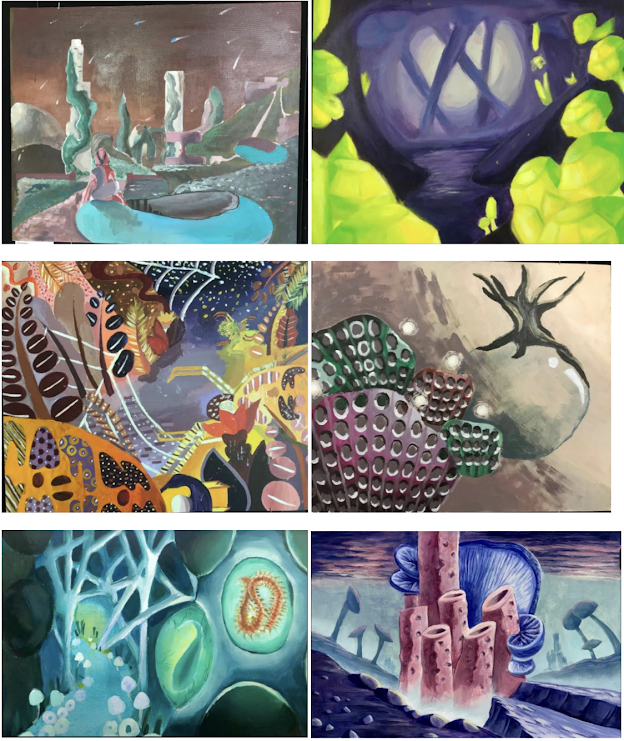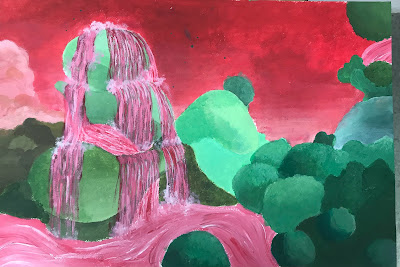Lesson for 9th or 10th, 5 weeks, acrylic
--Day 1 Starting question: How do non-human animals experience the world differently than we do? Worlds of smells, echolocation, vibrations, "seeing" only movement. What else?
--Slideshow to introduce a condition called synesthesia (based on the synesthesia chapter of Tell Tale Brain by V.S. Ramachandran). What tests can we run to verify that Synesthesia is real? What's it like to experience the world as a synesthete does?
--Discuss Kiki and Bouba -- how is it that people across such varied cultures see Kiki and Bouba the same way?
--Students watch "Tocotta" clip from Fantasia 1944.
--They listen to clips from music scores (Signs OST, Might of Rome from Gladiator, Claire de Lune, etc) and scribble down lines, shapes, or words inspired by the music. Then we as a class compare notes. Have students mostly come up with similar interpretations?
--Students, on their own, choose a 5-second clip from a song. Next, they begin sketching shapes, lines, gradients that match the mood, tempo, rhythm, or sounds.
--They work with teacher and shoulder partner to push the sketch further. Do their compositions use overlapping? Do shapes go off the edges? Variety in shape and size? Rotating the axis? Background vs Foreground values? They're still designing with values, not colors
--Day 2 they begin painting their best thumbnail on an A4-sized surface (heavyweight paper or canvas paper).
--Teacher demos a "wash"—i.e. watered-down paint on an already wet surface that lets the white of the paper shine through)
--Day 3 and 4 they complete these A4 warmup paintings.
--Day 5 and 6 (prep for final painting):
--Starting question: Where do imaginative, creative ideas come from? These ideas don't appear out of a vacuum, but from the fusion of two unlikely ideas (kites + dress design; kites + architecture; kites + light fixture design; kites + earring design; ...)
--In this project, we're pulling inspiration from plants or plant-like forms. Cactuses, Corals, mushrooms, microscopic organisms, seed pods, ferns, and slime molds. Have you ever seen bone marrow under a microscope? Begin with a slideshow of Hilma Af Klint, Max Ernst, Moebius, Killian Eng, and a few others who built alien landscapes from plant forms.
--Students start gathering images of interesting plant forms and plant textures. They go through 2-3 activities to turn these into alien landscapes or abstract pictures. They generate mood boards, and then waves of thumbnails, which they develop and iterate on.
--Then students paint for a few weeks, thinking about limited palette, foreground-middleground-background, focal points, and transparency vs opacity.
_____
By the end they've produced these:
_____
Bonus:
For more advanced (11th-grade to college) students, I've run a similar lesson. However, they pull inspiration not from mushrooms and cacti, but from clarinets, saxophones, french horns, and bassoons. Sample:















No comments:
Post a Comment